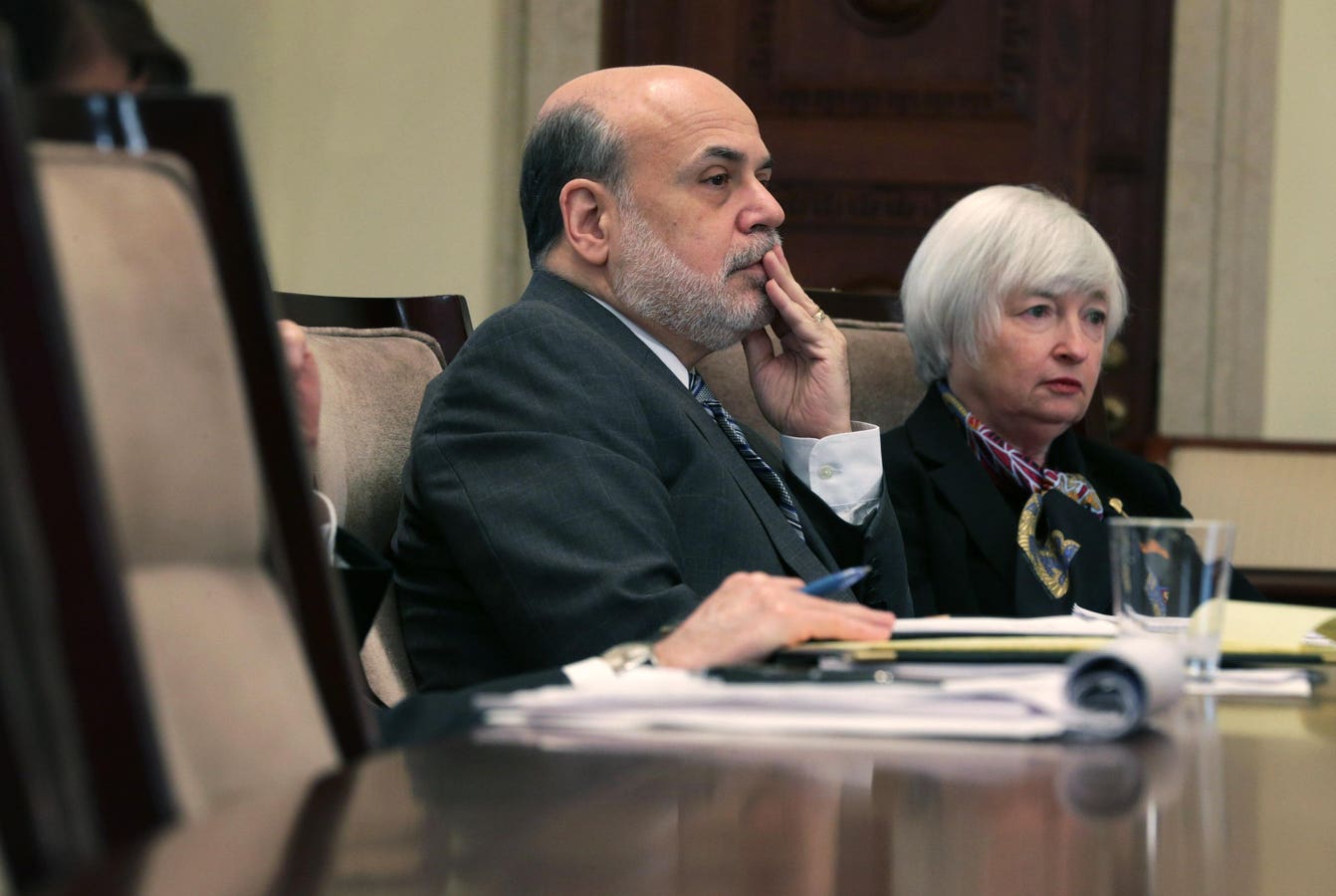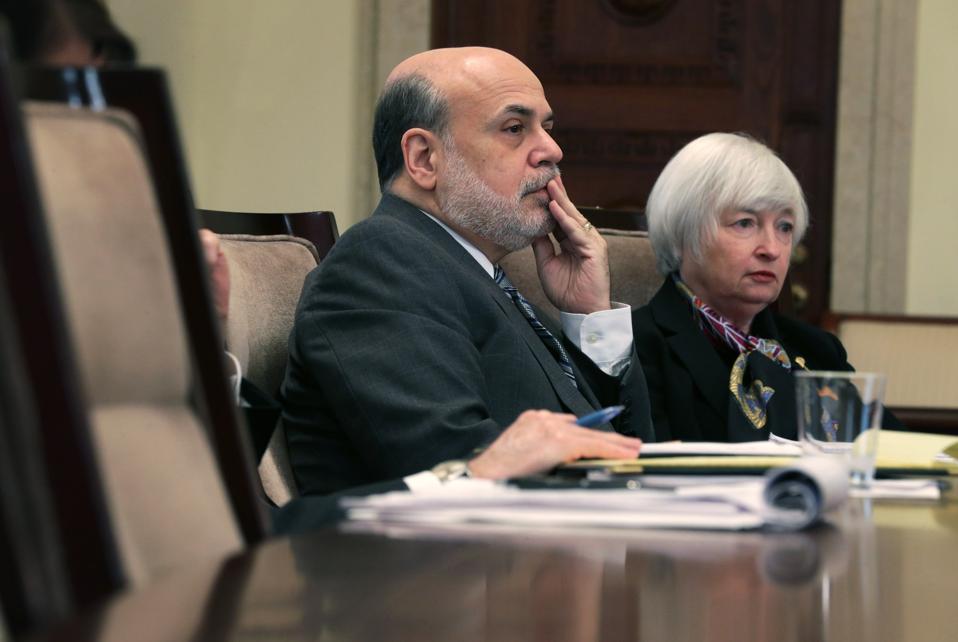WASHINGTON, DC – DECEMBER 10: Federal Reserve Board Chairman Ben Bernanke (L) and Janet Yellen (R), … More Vice Chair and President Obama’s nominee fto succeed Bernanke, listen during a meeting of the Board of Governors of the Federal Reserve System to discuss the final version of the so-called “Volcker Rule” December 10, 2013 in Washington, DC. The rule was adopted unanimously during the meeting that will ban proprietary trading by large banks. (Photo by Alex Wong/Getty Images)
Getty Images
Fed officials don’t grasp what inflation is. If they understood what it is, they wouldn’t be so worried about the Fed’s so-called independence.
For background, contemplate a recent New York Times opinion piece by former Federal Reserve Chairs Ben Bernanke and Janet Yellen. While they’re no longer at the central bank, their ideas about inflation remain. And what they imagine inflation to be speaks to the real problem at the Fed.
In an attempt to make a case for central bank independence, Bernanke and Yellen looked back in time to 1972. They contend that “President Richard Nixon pressured the Fed chair Arthur Burns to keep rates low ahead of the 1972 election to provide a short-term economic boost.” They assert that “The result, however, was stagflation.” Bernanke and Yellen mistake causes.
Inflation is a shrinkage of the monetary medium, in our case the dollar. The latter happened by design in August of 1971 when Nixon, despite passionate attempts by Burns to convince him not to, severed the dollar’s link to gold. Nixon’s act was itself inflation as any action meant to shrink the exchangeable value of the exchange medium is. Nixon got the dollar he wanted, which means he got inflation.
As for Nixon’s subsequent pressuring of Burns, it’s plainly ignored by Yellen and Bernanke that individuals borrow money for what it can be exchanged for. It’s a reminder that credit isn’t decreed by central bankers, rather it’s produced privately. Which is just a comment that no one just borrows to borrow, rather they borrow to get. In other words, Burns couldn’t have decreed credit cheap and easy even if he had wanted to. Markets always speak.
Bernanke and Yellen go on to promote the fiction that the end of the 1970s inflation was an effect of Paul Volcker’s “monetary tightening” that “led to a painful recession.” In this case, the former Fed chairs unwittingly find themselves joining hands with supply-side happy talkers who to this day embrace the falsehood that the fix for inflation is putting people out of work. No, such a view isn’t serious.
There’s no pain associated with ending inflation simply because there’s no pain to be had in monetary media that are consistent as measures of value. When it’s remembered that the sole purpose of money is to facilitate the exchange of goods, services and labor, it’s easy to see that there’s nothing economically harmful or difficult about arresting inflation. The latter is as simple as associating the currency in question with stability as a measure of value.
Which is a reminder that inflation is a policy choice, not some long and painful hike back from the proverbial abyss. Just tie the dollar to something known to be stable, and markets will comply.
Just as President Nixon was able to cruelly foist inflation on the U.S. and the world by severing the dollar’s link to gold, any president today (including Donald Trump) could end inflation with a decree to resume dollar-price stability born of a gold peg, or whatever peg the president deems most associative with stability.
All of which speaks to the real problem at the Federal Reserve right now. It’s not about “independence” or lack thereof. The Fed is a political creation so it’s never been independent to begin with.
What’s needed is a trusted dollar, but for the problem that neither Bernanke or Yellen, nor for that matter officials at the U.S. Treasury, understand what inflation is. We have a problem of inflation mystification, nothing else.

